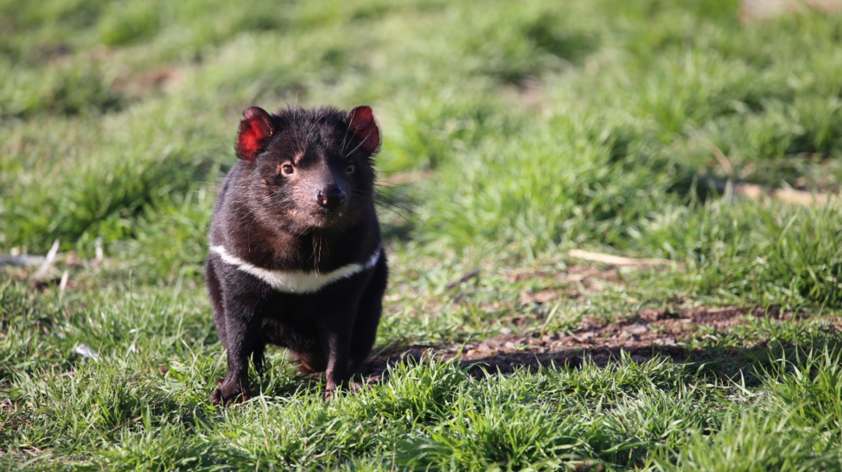
Everyone poops: Can you use scat as a tool for conservation of the Tasmanian Devil?
Tasmanian devils are marsupial carnivores that became the top predator in the island state of Tasmanian with the extinction of the Tasmanian tiger. They are both predators and scavengers of Australia’s hopping herbivores.
Devils are thought to be mostly solitary but come into contact with other devils when they find carcasses. Interactions at these carcasses often cause injuries as they vie for access to food. This is the normal life of a carnivore, but Devil facial tumor disease (DFTD), a contagious cancer spread mostly through bites, makes it a problem for Devils.
DFTD has reduced devil numbers by 90% of over the last 25 years.
This severe decline in wild devils prompted the Tasmanian government to bring healthy devils into captivity and develop and grow a population in captivity to serve as “insurance” against extinction. They have been wildly successful at breeding in captivity and efforts have turned to putting them back into the wild to support the wild populations across the state of Tasmania.
That’s where we came in. We study how to design and improve release strategies and often look to the species behavioral ecology to do just that. We traveled to Tasmania and visited devil habitat with government experts.
Like many social carnivores, Devils form latrines in the wild, which are like public billboards. And we found some big ones!
When a devil visits a latrine site, they stick their nose to the ground and gather information about other devils in the area, and they may leave a signal of their visit. Like skunks, badgers, ferrets and a host of other carnivores, devils have anal scent glands, and they rub, poop, and urinate in latrines. (See video below.)
What they communicate at these latrines is still a matter of speculation.
But, for many mammals, communication through scent is a common way to interact without injury. And, this gave us an idea. If we could familiarize wild resident devils with captive devils before they are released to the wild, we wondered if it would reduce aggressive interactions between devils, improve release success, and, just maybe, the spread of DFTD.
So, we worked with our Tasmanian collaborators and did a scent swap between wild and captive devils before release. We set out motion-triggered cameras at the release site and we documented wild devil visitation and behavior at latrines.
We then swapped poop.
We took poop from captive devils and put placed it into latrines in the wild and vice versa, and we waited. We checked remote cameras weekly and found that wild devils were drawn to the captive devil poop and spend a lot of time investigating it and leaving their own marks at the latrines.
Once the captive devils were released, the wild devils weren’t super interested anymore. They had become familiar with the captive devils just from their poop.
We don’t yet know if are poop swap reduced aggression, and we have more research to do, but it’s an exciting start!













